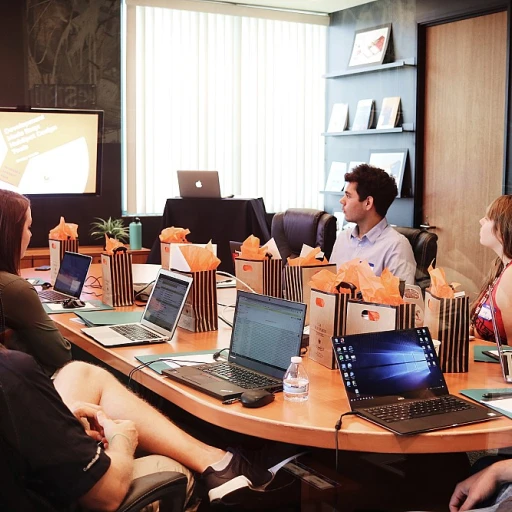Understanding the Impact of Challenging Employees on Candidate Experience
How Challenging Employees Influence Candidate Experience
The workplace environment is a crucial factor in shaping the candidate experience. When challenging employees are present, their behavior can create a ripple effect that extends beyond the immediate team, impacting potential candidates' perceptions of the company. Understanding this dynamic is essential for organizations aiming to attract top talent.
Challenging employees can take many forms, from those with difficult personalities to those exhibiting toxic behavior. These individuals can disrupt the work environment, leading to decreased team performance and a negative atmosphere. This not only affects current employees but also influences how outsiders view the company. Candidates often conduct thorough research, and reports of a toxic work environment can deter them from applying.
Here are some ways challenging employees can impact the candidate experience:
- Reputation Damage: Negative reviews from current or former employees about difficult team members can tarnish a company’s reputation.
- Increased Turnover: High turnover rates due to challenging employee types can signal instability to potential candidates.
- Team Morale: Low morale caused by difficult personalities can lead to poor team performance, which candidates may notice during the recruitment process.
Organizations must recognize these challenges and implement strategies to manage difficult employees effectively. Leadership plays a crucial role in setting clear expectations and fostering a positive work environment. By addressing these issues head-on, companies can improve their candidate experience and attract the right talent.
Identifying the 7 Most Challenging Employee Types
Recognizing Common Challenges in Employee Types
In any workplace, a variety of personalities and behaviors can create a complex dynamic. Identifying challenging employee types is crucial for maintaining a healthy work environment and positively influencing the candidate experience. Understanding these personalities can prevent negative repercussions on team performance and workplace harmony.Types of Difficult Behaviors
- Passive-Aggressive Individuals: These employees often express negative feelings indirectly, avoiding confrontation but causing disruptions in team communication. Their behavior may lead to misunderstandings and frustration among team members.
- Toxic Employees: Those who consistently bring negative energy, undermine colleagues' efforts, or spread gossip can severely impact the team's morale. These toxic behaviors erode trust and diminish productivity over time.
- Micro-Managers: While they may stem from a place of wanting to ensure success, this type of behavior can stifle creativity and autonomy within a team, leading to reduced employee satisfaction and engagement.
- Chronic Complainers: Employees who frequently voice dissatisfaction without offering solutions can demotivate others and create a pessimistic work culture.
- The Resistant to Change: Some team members struggle with adapting to new processes or technologies, which can stall progress and innovation if not addressed effectively.
- Aggressive Personalities: These individuals might dominate discussions, not considering others' opinions and potentially creating an intimidating atmosphere.
- Underperformers: Those consistently not meeting expectations can drag team performance down, requiring extra attention and resources to bring up to standard.
Importance of Identifying These Challenges Early
By identifying these challenging employee types promptly, leadership can implement strategies to address and mitigate their impact on the work environment. Proactively managing difficult personalities within the team fosters a positive atmosphere that not only improves current employees' experiences but enhances the candidate experience during recruitment processes. Dealing with these employee types requires clear expectations and often a tailored approach to uphold a productive and harmonious workplace.Strategies for Managing Difficult Employees
Effective Strategies for Navigating Employee Challenges
Managing difficult employees in the workplace demands a blend of strategy, empathy, and consistency. Understanding the various personality types and adopting tailored approaches is crucial to maintain a harmonious work environment and ensure productive team dynamics. Here are several strategies that can prove effective when it comes to dealing with challenging employees:- Set Clear Expectations: Clearly communicate job expectations, responsibilities, and acceptable behavior standards from the onset. This approach reduces ambiguity and provides a framework for evaluating performance.
- Provide Constructive Feedback: Regular and constructive feedback can help address problematic behaviors before they escalate. Focus on specific examples and outcomes, and suggest alternative approaches to improve.
- Foster Open Communication: Encourage open dialogue and provide a platform for team members to express concerns and share feedback. This can mitigate misunderstandings and foster a positive work environment.
- Be Consistent: Apply policies and procedures consistently across the board. Inconsistent handling of challenging employees can lead to perceptions of favoritism and erode trust within the team.
- Cultivate Emotional Intelligence: Improve your ability to recognize and manage emotions, both your own and those of others. This can enhance your ability to effectively deal with difficult personalities.
- Offer Training and Development: Invest in development programs that aid employees in refining their skills, including communication and conflict resolution. This not only benefits the individual but the team as a whole.
- Recognize Positive Contributions: Don't overlook the positive contributions of challenging employees. Lifting their strengths can motivate them to improve and integrate better into the team dynamic.
The Role of Leadership in Addressing Employee Challenges
Leadership's Influence in Managing Difficult Dynamics
Leadership plays a crucial role in addressing challenges posed by difficult employee types within the workplace. An effective leader can significantly transform the work environment into one where all team members feel valued and understood, despite the presence of challenging individuals. Understanding Diverse Personalities Leaders must first recognize the different personality types that contribute to the challenging dynamics. From passive-aggressive behavior to more overtly toxic personalities, each presents unique challenges. By understanding these personality types, leaders are better equipped to address issues without escalating tensions. Setting Clear Expectations To manage difficult employees effectively, setting clear expectations is key. Leaders should communicate what is acceptable behavior in the workplace, ensuring all team members understand the impact their performance and interactions have on the collective work culture. Open Communication Channels Promoting open and honest communication within the team can help leaders address problematic behaviors promptly. Encouraging employees to voice concerns or provide feedback in a respectful manner can help mitigate misunderstandings and prevent the escalation of conflicts. Strengthening Team Culture A strong team culture is integral to maintaining a healthy work environment. Leadership should encourage a culture of support and collaboration where difficulty is addressed constructively. This helps in minimizing the influence of toxic employees and ensures that the team remains focused on shared goals. Training and Development Opportunities Leaders need to provide ongoing training and development for both themselves and their team members. This not only helps improve skills but also fosters an environment of growth and motivation which can counteract the effects of dealing with difficult personalities. Investing time in leadership development ensures that responses to challenging situations are handled professionally and effectively.Tools and Resources for Supporting Managers
Resources and Tools to Support Managers in Dealing with Challenging Employees
Navigating the realm of difficult personalities and complex workplace behaviors can be daunting, especially for managers responsible for maintaining team harmony. Leveraging the right tools and resources can significantly make this task more manageable.- Training Programs: Implementing regular training sessions can help managers improve their skills in identifying toxic employees and dealing with difficult personalities. These programs can improve their understanding of various behavior types and equip them with strategies to manage different personality types effectively.
- Behavioral Assessment Tools: Utilizing assessments like the Myers-Briggs Type Indicator (MBTI) or DiSC can help uncover the personality types of challenging employees. These insights enable managers to tailor their approach by setting clear expectations for each type.
- Mediation and Conflict Resolution Services: In situations where team members are finding it hard to deal with particularly difficult people, mediation services can provide a neutral ground for resolving conflicts and improving the overall work environment.
- Leadership Coaching: Specialized coaching can bolster a manager's ability to influence and guide their team effectively. Leadership coaches can provide practical advice and feedback on managing specific difficult employee types.
- Feedback Mechanisms: Establishing robust feedback channels can foster open communication among team members. This encourages expressing concerns about difficult behaviors and allows managers to address issues promptly, preventing further disruption in the workplace.
Measuring Success: Evaluating Improvements in Candidate Experience
Assessing Improvements in Workplace Dynamics
Measuring the success of efforts to improve candidate experience, especially in environments fraught with difficult personalities, requires a comprehensive evaluation approach. It's essential to gauge not only the immediate changes in employee behavior but also the longer-term impact on the work environment and overall team dynamics.
To effectively evaluate improvements, consider the following steps:
- Monitor Employee Performance: Assess if there's a noticeable improvement in the behavior and performance of the challenging employee types. Collect feedback from team members to see if these employees are more receptive to feedback and if their integration within the team is improving.
- Evaluate Team Morale: Observe whether morale has increased across the board. This can be measured through regular surveys that capture insights into employee satisfaction and opinions on the workplace atmosphere.
- Examine Leadership Effectiveness: Analyze how leadership strategies are being received by employees. Are leaders setting clear expectations? Is there transparency in communications regarding workplace goals and expectations?
- Track Candidate Experience Metrics: Improvements in the employee environment can often be reflected in better candidate experiences. Review metrics such as application volume, candidate feedback during interviews, and time-to-hire rates for indications of enhanced candidate perceptions.
Implementing a strong feedback loop between employees and management is crucial. It fosters an environment where difficult employees are more likely to evolve and where other team members feel heard and valued. Continuous monitoring and adaptation will contribute significantly to maintaining improvements and reinforcing a constructive work environment.






